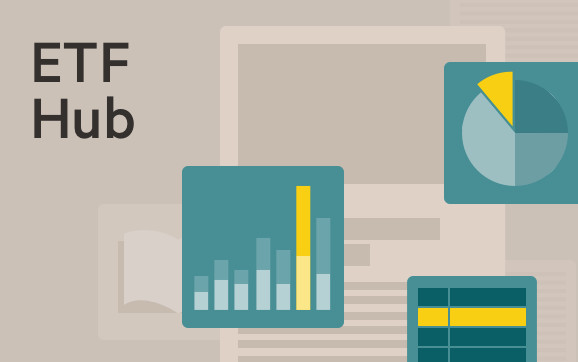Growth and value ETFs’ performance diverge after S&P rebalance

Simply sign up to the Exchange traded funds myFT Digest -- delivered directly to your inbox.
Latest news on ETFs
Visit our ETF Hub to find out more and to explore our in-depth data and comparison tools
Performance has varied more than usual this year for ETFs in the same asset classes, a new report shows.
Last year’s tech stock crash and overall market swings prompted the S&P to move some big companies, such as ExxonMobil, from value indices to growth ones, according to a CFRA Research. And since S&P’s rebalancing, which happened at the end of 2022, the performance of growth- and value-oriented ETFs has varied widely because different ETFs in the category have underlying indices with vastly different holds.
In the US small-cap space, growth ETFs tracking CRSP indices outperformed value by 2.2 per cent year to date through to February 27, the report says. But when examining small-cap ETFs that track S&P indices, value outperformed growth by nearly 4 per cent.
This disparity is because S&P’s growth indices include price momentum as a growth factor, unlike CRSP’s indices, the report notes. As a result, energy stocks that did well in 2022 moved from S&P value to growth indices.

This article was previously published by Ignites, a title owned by the FT Group.
Those energy companies include ExxonMobil, Chevron, Marathon Oil and Conterra Energy, according to Aniket Ullal, head of ETF data and analytics at CFRA Research and author of the report.
Each of those energy companies previously had 100 per cent of their market cap allocated to S&P’s value index, said Hamish Preston, director of US equity indices at S&P Dow Jones Indices.
Conversely, Meta Platforms and Cisco — which were previously considered growth stocks by the S&P — now have 100 per cent of their market cap allocated to the value index and are not in the S&P growth index, Preston added.
The S&P rebalances its growth and value indices on the third Friday in December every year, the firm’s June 2022 Style Indices Methodology report shows.
“The growth score is just a simple average of the available data,” Preston said. “On the growth side of the ledger, the descriptors we use are earnings growth rates — so, three-year earnings growth rate, three-year sales-per-share growth rate and momentum. And on the value side of the ledger, it’s book value to price, sales to price and earnings to price.”
Last year, the S&P 500 energy sector gained 66 per cent, its best calendar year performance since at least 1990, he noted. Many energy companies fared well on momentum and earnings and sales growth rates were strong, which led to the shift from value to growth, he added.
Latest news on ETFs

Visit the ETF Hub to find out more and to explore our in-depth data and comparison tools helping you to understand everything from performance to ESG ratings
The three worst-performing value sectors last year, meanwhile, were communication services, information technology and consumer discretionary, Preston said.
“And some of the largest and recently more growth-oriented companies came under particular pressure amid that rising rate environment,” he added. “The idea being [that] growth companies are typically expected to have expected cash flows further into the future as interest rates rise and discounting those anticipated cash flows back to the present has a greater impact.”
The resulting “divergence” between ETFs that track indices from different providers can be seen by comparing the performance of the $146.7bn Vanguard Growth ETF, which tracks the CRSP US Large Cap Growth Index, and the $28.1bn iShares S&P 500 Growth ETF, according to the report. The Vanguard ETF was up 8.93 per cent from the start of the year through to February 27, compared to the iShares ETF, which was up only 3.98 per cent.
Every ETF that tracks an index is affected by index rebalancing and the timing of the shuffle depends primarily on the methodology of the index provider, Ullal said.
“The most important rebalances to focus on are large headline indices like the S&P 500 and Russell 1000 and 2000, since sector indices (and therefore sector ETFs) are derived from the parent headline index,” Ullal wrote.
The large gap between ETFs based on underlying indices has also affected value-oriented ETFs, the report noted. Value and growth ETFs from the same shop that track indices from different companies have had inverse performance gaps depending on the indices they track, the report shows.
In the US small-cap equity space, for example, the $29.6bn Vanguard Small-Cap Growth ETF outperformed its value counterpart, the $50.8bn Vanguard Small-Cap Value ETF, by 2.2 percentage points over the first two months of 2023. Both ETFs track CRSP indices.
But Vanguard’s US small-cap ETFs that track S&P indices, such as the $1.4bn Vanguard S&P Small-Cap 600 Value ETF, are outperforming growth ETFs like the $534mn Vanguard S&P Small-Cap 600 Growth ETF by an average of 3.94 percentage points from the start of the year through to February 27, the report noted.
The two Vanguard small-cap value funds have a 6.14 percentage point difference in performance — even though they’re in the same asset class — owing to the different underlying indices, Ullal noted.
Comments